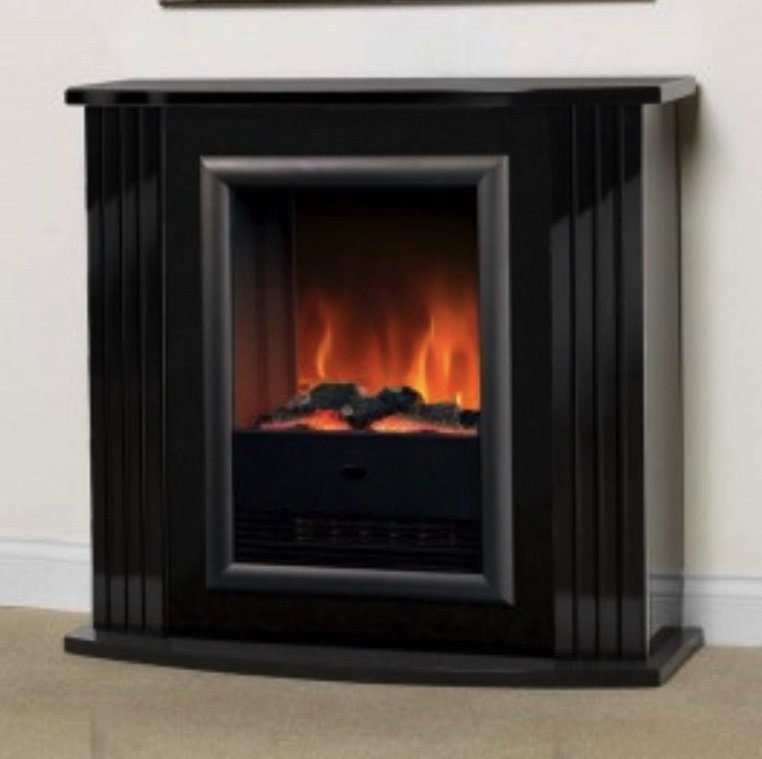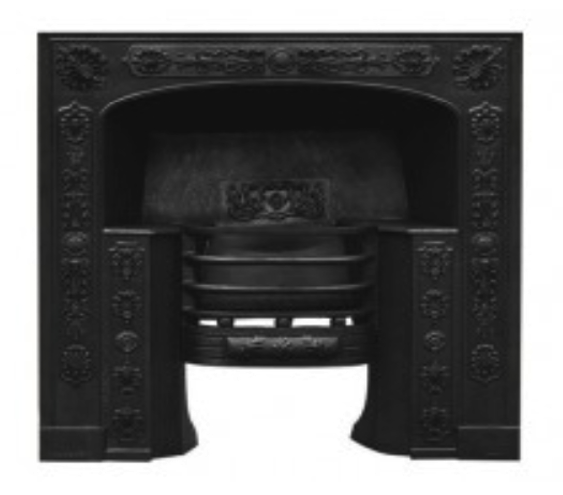Confused About Fireplace Jargon? Let Us Explain!
If you are buying a fireplace for the first time, you may be confused about the terminology. Here we demystify common phrases you will come across when fireplace shopping.
Fireplace Inserts
Older fireplaces are inefficient because they have an open combustion design that draws the heated room air into the fire, causing it to burn very quickly, consequently wasting energy. As the temperature rises in a room with a fireplace fitted with an insert, the burners decrease their output but still emit a continuous flame. A fireplace insert slows the intensity of the fire and increases its temperature to help more complete combustion.
Generally, fireplace inserts are made from steel or cast iron. modern inserts have self-cleaning glass doors so you can see the flames clearly with the door closed.
Fireplace Flues
A fireplace flue is a vertical tunnel or duct that runs from the fireplace to the roof's chimney opening.
A chimney allows smoke to leave the home from the fire. A chimney's flue must be lined, and a chimney liner is usually called the flue. Every wood-burning fireplace has a flue. Gas fireplaces do not require a chimney, but a flue is needed to efficiently and safely remove gases – such as carbon monoxide, which gas fuel produces. A flue safely transports gases into the air outside.
Electric fireplaces do not need chimneys or flues.
Chimney flues were traditionally made from fireclay. More recently, manufacturers also use stainless steel to make flues.
Fireplace Mantels
In the UK, we often refer to a fireplace mantel as a mantelpiece. The mantelpiece is a flat shelf above the fireplace. The shelf is often used for ornaments, or other items, such as a clock and family photos, making it a focal point in a room.
You will typically find fireplace mantels constructed as part of a fireplace surround, or you can buy a "floating mantel" that is separate from the rest of the surround.
The mantel is not just for decorative purposes. It helps increase the heating effectiveness of a fireplace. Fireplace mantels originated in medieval times to help prevent smoke from filling the room.
A mantel is not strictly necessary, but the space over a fireplace can look bare without a mantelpiece.
Fireplace Screens
The primary purpose of a fireplace screen is safety, as they prevent embers from the fire wafting into the room. An unprotected open fire can easily cause house fires.
A screen also stops young children and pets from getting too close to the flames.
A screen also improves airflow. To keep a screen functioning well, you should clean it every few months during the cold month when your fireplace is used.
Fireplace Doors
Instead of using a fireplace screen, you might prefer fireplace doors. The main benefits of fireplace doors are energy efficiency and preventing sparks from entering the room.
Since fireplaces come in many sizes, it is essential to find glass doors that match your fireplace size. If a door is ill-fitting, it will not work effectively, be it too large or too small, and smoke from the fireplace could enter the room through gaps.
Fireplace doors also help stop cold air from unused fireplaces drafting into the room. Many modern fireplace doors are thermally insulated, helping keep the room warmer.
Electric Fireplaces
Fireplaces are a favorite home feature in the UK as they give a room a warm cozy feel. People have always enjoyed the glow a real fire brings to a room. However, older traditional fireplaces are not energy-efficient, and this is where electric fireplaces come in.
Electric fireplaces are one of the most practical home heaters and will heat the room faster than standard wood fireplaces, which lose a lot of heat through the chimney.
With a modern electric fireplace, you can enjoy the visual impression of a wood-burning fire with more dependable heating. Electric fireplaces in the market today have very realistic-looking flames, are not overly expensive, and are simple to install.

Gas Fireplaces
As the name suggests, gas fireplaces do not use wood but run on gas. Unlike traditional fireplaces, gas fireplaces do not need a chimney, and therefore you have more options when it comes to choosing where you will place a gas fireplace. You can find gas inserts or freestanding fireplaces on sale.
Fireplace Grates
A fireplace grate is a metal grill-like structure that goes on the floor of a fireplace. You put wood or other solid fuel on the grate when lighting the fire. Grates are usually made from cast iron.
A grate raises the fire off the floor, which helps ventilate the flames. Fireplace grates also help control the fire, and their design maintains the fuel burn evenly for more constant heating.
Fireplace Accessories
For a fireplace to work well, it is essential to keep it clean. For this, you will need some fireplace tools and accessories.
Standard tools include tongs, a fire poker, a small broom, and a metal shovel. These are usually made from wrought iron and will last for decades. You might also want to consider a kindling bucket or log basket for your fuel.
If you have any questions about fireplaces or are unsure which type to choose, don't hesitate to contact us. Our expert staff is always on hand to help!



